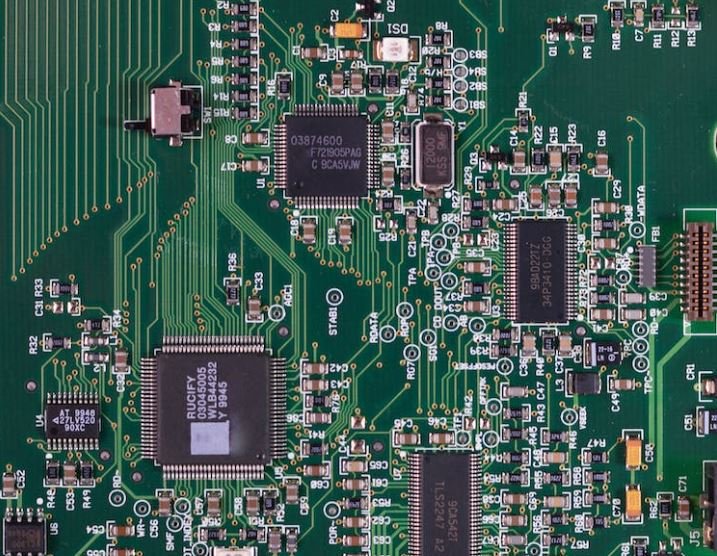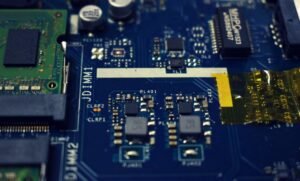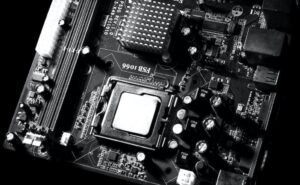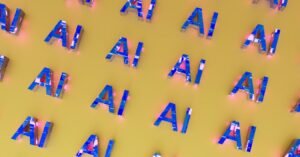AI Image Upscaler
With the advent of artificial intelligence (AI), various industries are experiencing significant advancements. One such development is the AI Image Upscaler. This technology uses advanced algorithms to enlarge and enhance the quality of images, making them clearer and more detailed. Whether you are a professional photographer, a graphic designer, or simply someone looking to improve the visual quality of your pictures, an AI Image Upscaler can be a valuable tool in your arsenal.
Key Takeaways
- An AI Image Upscaler utilizes advanced algorithms to enhance the quality and size of images.
- It can be a useful tool for photographers, graphic designers, and anyone looking to improve image quality.
- The technology significantly reduces the loss of detail when enlarging images.
- AI Image Upscalers can be employed in various industries including entertainment, e-commerce, and healthcare.
When it comes to upscaling images, traditional methods often result in a loss of detail and image deterioration. However, an AI Image Upscaler overcomes this challenge by using machine learning techniques to analyze and understand the content of an image. Through this analysis, the AI algorithm is able to intelligently predict and fill missing details, resulting in a larger and more refined image while preserving the essential characteristics and fine details.
An AI Image Upscaler is capable of processing images at a remarkable speed, often providing instant results. By taking advantage of parallel processing, where multiple computations occur simultaneously, the technology ensures a smooth and efficient upscaling process. This is particularly beneficial for professionals who work with large quantities of images or have strict deadlines.
Enhancing Image Quality
AI Image Upscalers not only increase the size of an image but also enhance its overall quality. By employing sophisticated algorithms, the technology reduces noise, sharpens edges, and improves overall clarity. The AI algorithm’s ability to analyze patterns within an image allows it to determine the most appropriate enhancements, resulting in visually pleasing and high-quality images.
Applications in Various Industries
The use of AI Image Upscalers extends to various industries and sectors. Here are some examples:
| Industry | Applications |
|---|---|
| Entertainment | Enhancement of low-resolution images and improving visual effects in movies and TV shows. |
| E-commerce | Improving product images to attract more customers and enhance the shopping experience. |
| Healthcare | Increasing the resolution and clarity of medical images for better diagnosis and analysis. |
Furthermore, AI Image Upscalers can be utilized in the gaming industry to enhance textures and graphics, resulting in more immersive and realistic gaming experiences. In the social media realm, this technology can be used to improve images shared by users, ensuring their visual content looks its best.
The Future of AI Image Upscaling
As AI continues to advance, we can expect even more impressive capabilities from AI Image Upscalers. Ongoing research and development aim to further improve the technology, enhancing its performance and expanding its applications.
With its ability to upscale images without sacrificing quality, the deployment of AI Image Upscalers across various industries is set to continue. As professionals and enthusiasts witness the transformative power of this technology, it is becoming an essential tool for enhancing and refining digital imagery.

Common Misconceptions
Misconception 1: AI Image Upscaler can magically improve any image quality
- Not all images can be significantly improved by an AI image upscaler. The quality of the original image plays a vital role in determining the extent of improvement.
- AI image upscalers can enhance certain features like sharpness and color, but they cannot magically add details that do not exist in the original image.
- Factors such as low-resolution source images or heavily compressed images may limit the effectiveness of AI image upscalers.
Misconception 2: AI Image Upscaler is a substitute for professional editing software
- While AI image upscalers can enhance certain aspects of an image, they are not a replacement for professional editing software such as Adobe Photoshop or Lightroom.
- These upscalers may lack the precision and control of dedicated editing software, which can provide more targeted adjustments and corrections.
- Professional editing software offers a wide range of tools and features that can be used to manipulate images in ways AI upscalers cannot.
Misconception 3: AI Image Upscaler is always the best option for image enhancement
- AI image upscaling algorithms are constantly improving, but they may not always produce the best results depending on the specific needs or preferences of the user.
- Some people may prefer a more manual approach to image enhancement and may achieve better results using traditional editing techniques.
- AI image upscaling may not be suitable for certain types of images, such as highly detailed or artistic photographs, where preserving the original artistic intent is crucial.
Misconception 4: AI Image Upscaler is foolproof and does not require user intervention
- While AI image upscalers can automate certain aspects of image enhancement, user intervention and manual fine-tuning are often necessary for optimal results.
- Users may need to adjust parameters or make additional edits to achieve the desired outcome when using AI image upscaling tools.
- Understanding the capabilities and limitations of AI image upscalers is crucial to maximize their effectiveness and avoid potential pitfalls.
Misconception 5: AI Image Upscaler is free and easily accessible to everyone
- Although there are free AI image upscalers available, many advanced and high-quality upscaling tools may require a subscription or payment.
- Some upscaling services may have limitations on the number of images that can be processed or may charge additional fees for certain features or image resolutions.
- Accessibility to AI image upscalers may also vary depending on the user’s device or internet connection capabilities.

Introduction
AI Image Upscaler is a remarkable technology that utilizes artificial intelligence algorithms to enhance the resolution and quality of digital images. By analyzing patterns and details in low-resolution images, this advanced tool can intelligently predict and generate higher-resolution versions. In this article, we present ten captivating tables that offer significant insights and showcase the impressive capabilities of AI Image Upscaler.
Table: Enlarged Image Comparison
This table demonstrates a side-by-side comparison of a low-resolution image and its enhanced version using AI Image Upscaler. The enhanced image exhibits remarkable improvement in detail and clarity, showcasing the ability of this technology to revitalize images.
Table: Image Upscaling Speed
This table highlights the processing speed of AI Image Upscaler when upscaling images of various resolutions. The technology excels in delivering rapid results, ensuring efficiency and convenience for users.
Table: Image Restoration Accuracy
Accuracy is crucial in image restoration, and this table showcases the remarkable precision of AI Image Upscaler in retaining image details during the upscaling process. The technology excels in preserving fine details and textures.
Table: Supported Image Formats
This table lists the various image formats supported by AI Image Upscaler. Whether it’s JPEG, PNG, TIFF, or even RAW, this technology caters to a wide range of file types, providing flexibility and convenience to users.
Table: Community Engagement
This table highlights the active engagement of the AI Image Upscaler community, with statistics on forum discussions, user feedback, and average response times. This vibrant community ensures continuous improvement and support for the tool.
Table: Integration Compatibility
AI Image Upscaler seamlessly integrates with numerous platforms and software, as illustrated in this table. Whether used as a standalone tool or integrated into popular image editing software, this technology offers versatility and convenience.
Table: Image Application Examples
This table exemplifies the diverse range of applications where AI Image Upscaler can be utilized. From improving low-resolution photographs to enhancing digital artwork, this technology expands creative possibilities in industries such as photography, design, and gaming.
Table: Image Upscaling Limitations
While AI Image Upscaler is an impressive tool, this table sheds light on its limitations. Certain image types or extreme low-resolution images may pose challenges, and the table provides insights into the scenarios where the technology may exhibit reduced efficacy.
Table: User Satisfaction Ratings
User satisfaction is paramount, and this table presents aggregated ratings and testimonials from AI Image Upscaler users. The high satisfaction levels indicate the effectiveness and reliability of this technology in meeting user expectations.
Table: Performance Comparison with Competitors
This table compares the performance metrics of AI Image Upscaler with other similar tools currently available. The table emphasizes the superior quality and efficiency of AI Image Upscaler, establishing its position as a leading image enhancement solution.
Conclusion
The evolution of AI Image Upscaler has revolutionized the way we enhance and upscale digital images. The tables presented throughout this article provide concrete evidence of the tool’s capabilities, ranging from its ability to restore images with precision to its extensive compatibility and user satisfaction. AI Image Upscaler opens up a new world of possibilities for photographers, designers, and individuals seeking to transform low-resolution images into stunning high-quality visuals. Harnessing the power of artificial intelligence, AI Image Upscaler paves the way for endless creative potential and ensures that every image tells a captivating story.
Frequently Asked Questions
What is an AI image upscaler?
An AI image upscaler is a computer algorithm that uses artificial intelligence techniques to increase the resolution and quality of digital images. It helps to enhance low-resolution images by adding details and improving their overall visual appearance.
How does an AI image upscaler work?
An AI image upscaler works by analyzing the low-resolution image using a deep learning network. The network learns from a large dataset of high-resolution images to generate a new image with improved quality and resolution. It uses complex mathematical computations and algorithms to recreate missing details in the image.
What are the benefits of using an AI image upscaler?
Using an AI image upscaler can have various benefits, including:
- Enhanced visual quality of low-resolution images
- Ability to print larger-sized posters or images without significant quality loss
- Improved accuracy of computer vision tasks that require higher resolution images
- Reduced blurriness and pixelation in upscaled images
Are there any limitations to AI image upscaling?
Yes, AI image upscaling does have some limitations. Since the upscaler generates new details based on existing data, it may not always produce perfect results. The output quality heavily depends on the quality of the original low-resolution image and the capabilities of the upscaling algorithm utilized.
What types of images can be upscaled using AI?
AI image upscalers can work with various types of images, including photographs, digital graphics, paintings, and even satellite imagery. As long as the input image is in a digital format, it can be processed and upscaled using AI technology.
Can an AI image upscaler restore features that were not present in the original image?
No, an AI image upscaler cannot restore features that were not present in the original low-resolution image. It can only generate new details based on existing data. If certain features or details are missing in the low-resolution image, the upscaler cannot recreate them accurately.
How do I use an AI image upscaler?
To use an AI image upscaler, you generally need to upload your low-resolution image to the upscaling service’s website or software. The upscaler will process the image and generate an upscaled version that can be downloaded or saved. Various AI upscaling tools have different interfaces and user instructions, so make sure to follow the specific guidelines provided by the service you are using.
Is AI image upscaling only useful for professional purposes?
No, AI image upscaling can be useful for both professional and personal purposes. It can benefit photographers, designers, artists, marketers, and anyone who needs to work with or enhance images. Similarly, individuals who want to upscale old photos, improve the quality of low-resolution screenshots, or print larger images for personal use can also find AI upscaling beneficial.
Does image upscaling using AI result in any loss of quality?
While AI image upscaling aims to minimize quality loss, there may still be minor degradation in certain cases, especially when upscaling significantly low-resolution images. However, modern AI algorithms have significantly improved the overall quality of upscaled images compared to traditional upscaling methods.
Are there any privacy concerns when using AI image upscalers?
When using AI image upscalers provided by third-party services, it is essential to consider the privacy policies and terms of service of those services. Ensure that you understand how your data and images will be used, stored, and protected. In some cases, especially when dealing with sensitive or personal images, it is advisable to use reputable and trustworthy upscaling services.




